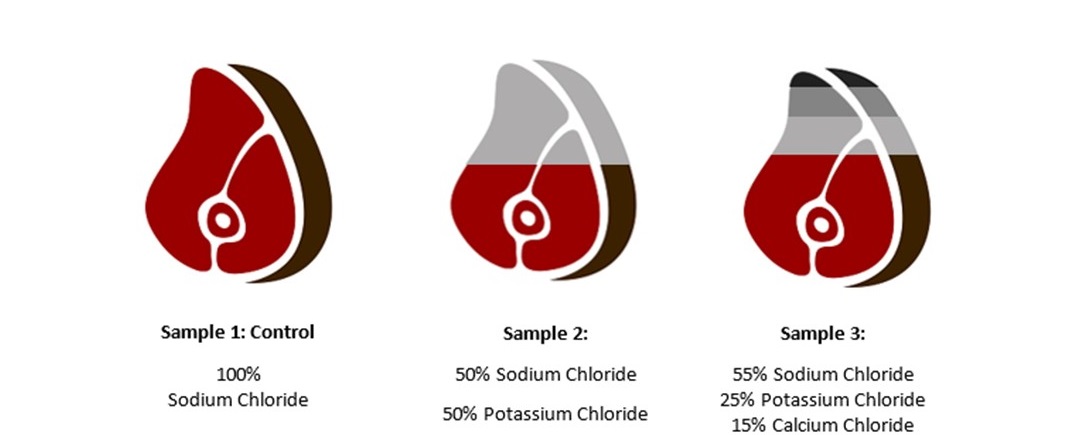Potassium Chloride: A Solution for Low Sodium Meats
Study findings uncover an optimistic resolution for meat manufacturers wanting to reduce sodium with potassium chloride.
If you work in the food industry, you likely know why salt is an essential ingredient in meats; it naturally maintains taste, texture, water holding capacity, shelf-life, and of course overall quality and safety (1). Nevertheless, lowering sodium content in processed meat products has been heavily researched by food manufacturers due to both consumer demand and pressure from health and regulatory agencies (2). As Donna Berry from Food Business News exclaimed, “There’s no certainty to what degree the federal government will heed the reduced-meat recommendations; however, it is a good time for processors to commit to reducing sodium content in order to keep their products on the menu…at home, in schools and other institutions. You don’t want consumers’ sodium reduction efforts to include swapping a ham and turkey hoagie for a veggie wrap (2).”
So how is it done? A wide array of sodium reduction solutions exist in the market, which presents a complicated decision for meat producers. “The challenge for processed-meat manufacturers is to identify innovative ingredient combinations and/or processing technologies that allow for sodium reduction or replacement with minimal or no negative impact on meat product attributes," says Wesley Osburn, Associate Professor at the Department of Animal Science at Texas A&M University (3).
To better understand the best sodium reduction solution for meat products, Cargill has conducted and evaluated numerous studies aimed at uncovering the optimal low sodium option for meats. One study by two notable food science Universities investigated the biochemical and sensory changes in dry-cured ham salted with partial replacements of NaCl by other chloride salts. The formulations included ham samples made with 100% sodium chloride (the control), a blend of 50% sodium chloride and 50% potassium chloride, and another blend of 55% sodium chloride, 25% potassium chloride, 15% calcium chloride, and 5% magnesium chloride. These particular blends were selected based on a lack of evidence verifying their success as low sodium options in dry-cured ham, though directional test results have indicated their potential (1).

However, significant differentiation between the samples arose during sensory testing. The sample containing calcium chloride and magnesium chloride, scored much lower on all sensory attributes – taste, aroma, juiciness, and hardness. The sample containing just sodium chloride and potassium chloride, delivered much more comparable results to the control ham samples, made with 100% sodium chloride. This suggests that relative to the investigated formulas, the optimal sodium reduction solution for processed meats was the 50-50 sodium chloride and potassium chloride blend (1).
With processed meats posing substantial obstacles in sodium reduction, these findings uncover an optimistic resolution for meat manufacturers. Rather than searching for a complicated sodium reduction solution that expands your ingredient list, more studies are determining that the simple and most affective answer is potassium chloride (1, 4).
- Cargill Proprietary Research: Reducing Sodium in Processed Meat Applications
- http://www.foodbusinessnews.net/articles/news_home/Consumer_Trends/2015/03/Sodium_reduction_and_meat.aspx?ID=%7B2FEB1BD1-C44F-4ADF-AA26-2D7B0504D2D5%7D&cck=1
- https://www.naturalproductsinsider.com/articles/2013/11/lower-sodium-processed-meat-is-it-possible.aspx
- Cargill Proprietary Research: Reducing Sodium in Processed Meat Applications
